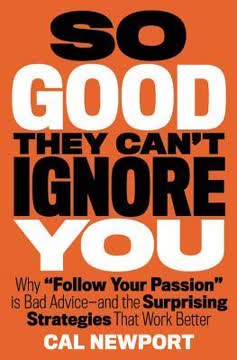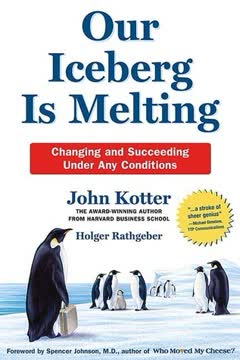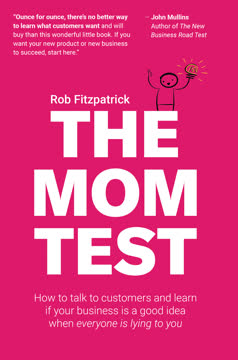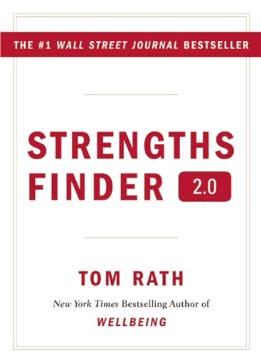Key Takeaways
1. Identify your strengths to unlock your full potential
Your strengths are those activities that make you feel strong.
Strength identification is critical. Your strengths are not just what you're good at, but activities that energize and fulfill you. Look for four key signs of a strength:
- Success: You perform consistently well
- Instinct: You feel drawn to the activity
- Growth: You learn quickly and stay focused
- Needs: You feel authentic and energized afterward
To identify your strengths:
- Capture activities that make you feel strong over a week
- Clarify the essence of these activities
- Confirm by testing against the four signs
Write strength statements that vividly describe activities making you feel strong. For example: "I feel strong when I interview someone who excels at their job and explore why they excel."
2. Focus on developing strengths, not fixing weaknesses
You will succeed in putting your strengths to work only if you believe that capitalizing on your strengths is the best way to compete.
Reject the myths that hold you back from focusing on strengths:
- Myth: As you grow, your personality changes
- Myth: You will grow the most in your areas of greatest weakness
- Myth: A good team member does whatever it takes to help the team
Embrace the truth:
- As you grow, you become more of who you already are
- You will grow the most in your areas of greatest strength
- A good team member volunteers their strengths to the team most of the time
Focusing on strengths leads to greater success. Research shows that people who use their strengths daily are:
- 50% more likely to work in high-performing teams
- 38% more likely to be productive
- 44% more likely to earn high customer satisfaction scores
3. Your personality becomes more defined as you grow
As you grow, you don't change into someone else. You don't change your personality.
Personality stability is real. Research shows that:
- 45-50% of your personality is inherited
- The remaining 50-55% is influenced by peers and chance events, not parenting or birth order
- Your personality becomes more defined as you age, not fundamentally different
Implications for personal development:
- Focus on leveraging your innate strengths rather than trying to transform yourself
- Seek out situations that allow you to express your natural talents
- Understand that your core personality traits will remain consistent over time
Accept and build on who you are. Instead of trying to become a different person, aim to:
- Deepen your self-awareness
- Find roles and environments that suit your natural inclinations
- Develop skills that complement your innate strengths
4. Create a Strong Week Plan to leverage your strengths
From this day on, devise a plan each week to push toward two specific activities and away from two others. Do this each week, every week, year upon year, and the changes you want to make in your life will both work and last.
The power of weekly planning. A week is the perfect unit of time for practical planning and psychological motivation. To create your Strong Week Plan:
- Assess last week: What percentage did you spend on activities you enjoy?
- Project for this week: What percentage will you spend on enjoyable activities?
- FREE your strengths: List two actions to leverage your strengths
- STOP your weaknesses: List two actions to minimize your weaknesses
Commit to consistency. Make this a weekly ritual to gradually reshape your work around your strengths. Over time, small changes compound into significant shifts in how you spend your time and energy.
5. Use the FREE strategy to put your strengths to work
To free your strengths will require you to do more of precisely those things that do come naturally to you.
FREE stands for:
- Focus: Identify how your strength helps in your current role
- Release: Find missed opportunities to use your strength
- Educate: Learn new skills to build on your strength
- Expand: Build your job around your strength
Practical application:
- Choose one strength to focus on
- Answer the FREE interview questions for that strength
- Identify specific actions you can take this week
- Implement and track your progress
Example: Heidi, a brand director, used her strength of "helping hotel managers excel" to transform her role. She shifted from chasing underperforming hotels to consulting with high-potential properties, dramatically increasing her job satisfaction and impact.
6. Minimize weaknesses using the STOP approach
To keep on it for our entire career, we need to stay clearheaded. We need to build the right habits, so that week in, week out, and year upon year, we stay in control, always pushing toward activities that strengthen us, ever watchful for those that drag us down.
STOP stands for:
- Stop: Can you simply stop doing the activity?
- Team up: Can someone else who enjoys it take it on?
- Offer up: Can you trade it for a strength-based activity?
- Perceive: Can you change your perspective on it?
Identifying weaknesses:
- Look for activities that consistently drain or frustrate you
- Pay attention to procrastination and dread
- Notice when time seems to slow down during a task
Strategies for managing weaknesses:
- Delegate or eliminate where possible
- Batch similar tasks to minimize context switching
- Schedule weakness-related activities when you have the most energy
- Reframe the activity in terms of a strength or larger goal
7. Have crucial conversations about your strengths and weaknesses
To reach outstanding levels of performance, you must stop tiptoeing. You must learn how to express—using unambiguous words and examples—what strengthens you and what weakens you.
Four key conversations:
- Strengths Chat: Practice describing your strengths with a trusted friend
- "How I Can Help You": Volunteer your strengths to your manager
- Weakness Chat: Practice discussing weaknesses with a friend
- "How You Can Help Me": Ask your manager for support in managing weaknesses
Tips for effective conversations:
- Use specific examples and vivid language
- Frame discussions in terms of increasing productivity and value
- Be prepared to offer solutions, not just identify problems
- Listen actively and be open to feedback
Overcoming fears: Address common concerns like being seen as selfish or incompetent by focusing on your desire to contribute more effectively to the team and organization.
8. Build strong teams by aligning roles with individual strengths
True teamwork occurs only when a complementary set of strengths comes together in a coordinated whole.
Strengths-based team building:
- Identify each team member's unique strengths
- Align roles and responsibilities with individual strengths
- Encourage open communication about strengths and weaknesses
- Create opportunities for strengths to complement each other
Benefits of strengths-based teams:
- Increased engagement and job satisfaction
- Higher productivity and performance
- Greater innovation and problem-solving capacity
- Improved team dynamics and collaboration
Case study: Team Georgia
Georgia, a senior director at Hampton hotels, reorganized her team based on individual strengths:
- Divided brand director roles into specialized functions
- Allowed team members to choose roles aligned with their strengths
- Resulted in increased initiative, faster problem-solving, and improved overall performance
Last updated:
FAQ
What's "Go Put Your Strengths to Work" by Marcus Buckingham about?
- Focus on Strengths: The book emphasizes the importance of identifying and leveraging your strengths to achieve outstanding performance in your career and personal life.
- Six-Step Discipline: It introduces a six-step process designed to help individuals identify their strengths, apply them effectively, and minimize the impact of their weaknesses.
- Strengths Movement: The book is part of a broader strengths movement that challenges traditional views on personal development, advocating for a focus on strengths rather than weaknesses.
- Practical Guidance: It provides practical advice and exercises to help readers implement the strengths-based approach in their daily lives.
Why should I read "Go Put Your Strengths to Work"?
- Improve Performance: The book offers strategies to enhance your performance by focusing on what you naturally do best.
- Career Development: It provides insights into how you can shape your career around your strengths, leading to greater job satisfaction and success.
- Personal Growth: By understanding and applying your strengths, you can achieve personal growth and fulfillment.
- Actionable Steps: The book includes actionable steps and exercises that can be easily integrated into your routine to make lasting changes.
What are the key takeaways of "Go Put Your Strengths to Work"?
- Strengths Over Weaknesses: Focus on building your strengths rather than fixing your weaknesses for maximum growth and success.
- Six-Step Process: Follow the six-step discipline to identify, apply, and sustain your strengths in your work and life.
- Self-Awareness: Develop a deep understanding of your strengths and how they can be applied to achieve your goals.
- Team Dynamics: Learn how to communicate your strengths and weaknesses effectively to create strong, collaborative teams.
What is the six-step discipline in "Go Put Your Strengths to Work"?
- Bust the Myths: Challenge common misconceptions about personal growth and strengths.
- Get Clear: Identify your strengths through self-reflection and feedback.
- Free Your Strengths: Find ways to apply your strengths more frequently in your work.
- Stop Your Weaknesses: Minimize the impact of your weaknesses by managing or delegating them.
- Speak Up: Communicate your strengths and weaknesses to others to gain support.
- Build Strong Habits: Develop routines that reinforce the use of your strengths over time.
How does Marcus Buckingham define a strength in "Go Put Your Strengths to Work"?
- Consistent Performance: A strength is an activity that you perform consistently and near-perfectly.
- Positive Feelings: It is something that makes you feel strong, energized, and fulfilled.
- Natural Inclination: Strengths are activities you are naturally drawn to and enjoy doing.
- Growth Potential: They are areas where you have the most potential for growth and development.
What are the myths about strengths that Marcus Buckingham addresses?
- Myth 1: As you grow, your personality changes. The truth is, your core personality remains stable over time.
- Myth 2: You will grow the most in your areas of greatest weakness. Instead, you grow the most in your areas of strength.
- Myth 3: A good team member does whatever it takes to help the team. In reality, the best teams are made up of individuals who play to their strengths.
How can I identify my strengths according to "Go Put Your Strengths to Work"?
- Capture Activities: Pay attention to activities that make you feel strong and energized.
- Clarify and Confirm: Use the SIGNs of a strength (Success, Instinct, Growth, Needs) to clarify and confirm your strengths.
- Self-Reflection: Reflect on past experiences where you felt successful and fulfilled.
- Feedback: Seek feedback from others to gain additional insights into your strengths.
What strategies does Marcus Buckingham suggest for applying strengths at work?
- Focus on Strengths: Identify how your strengths can help you succeed in your current role.
- Find Opportunities: Look for missed opportunities to leverage your strengths in your job.
- Learn and Grow: Acquire new skills and techniques to enhance your strengths.
- Expand Your Role: Gradually build your job around your strengths to maximize your contribution.
How does "Go Put Your Strengths to Work" suggest managing weaknesses?
- Stop Doing: Identify activities that weaken you and see if you can stop doing them.
- Team Up: Collaborate with others who are strengthened by activities that weaken you.
- Offer Strengths: Use your strengths to compensate for your weaknesses.
- Change Perspective: Shift your perspective to see weaknesses in a different light.
What are some of the best quotes from "Go Put Your Strengths to Work" and what do they mean?
- "You will grow the most in your areas of greatest strength." This quote emphasizes the book's core message that focusing on strengths leads to the most significant personal and professional growth.
- "Your strengths are those activities that make you feel strong." It highlights the importance of identifying activities that energize and fulfill you as a way to define your strengths.
- "The best teams are well-rounded, not the best individuals." This quote underscores the idea that effective teams are composed of individuals who each play to their strengths, rather than trying to be well-rounded themselves.
How can I communicate my strengths and weaknesses effectively at work?
- Strengths Chat: Start by having informal conversations with trusted colleagues or friends to practice articulating your strengths.
- How I Can Help: Schedule a meeting with your manager to discuss how your strengths can contribute to team goals.
- Weakness Chat: Practice discussing your weaknesses with a close friend to become comfortable with the language.
- How You Can Help Me: Approach your manager with specific ideas on how to manage around your weaknesses to enhance productivity.
How can I sustain the use of my strengths over time according to "Go Put Your Strengths to Work"?
- Daily Review: Regularly review your Strength and Weakness Statements to keep them top of mind.
- Weekly Planning: Use a Strong Week Plan to set specific actions for leveraging strengths and minimizing weaknesses.
- Quarterly Review: Meet with your manager quarterly to discuss your strengths and how they have contributed to your performance.
- Biannual Reflection: Capture, clarify, and confirm your strengths every six months to ensure they align with your evolving role and experiences.
Review Summary
Go Put Your Strengths to Work offers practical advice on identifying and leveraging personal strengths in the workplace. Readers appreciate its actionable steps and focus on maximizing talents rather than fixing weaknesses. Some found the writing style repetitive and overly reliant on online resources. The book's emphasis on aligning job responsibilities with individual strengths resonated with many, though its effectiveness depends on the reader's willingness to apply the concepts. Overall, it's considered a valuable resource for those seeking to improve their work performance and job satisfaction.
Similar Books







Download PDF
Download EPUB
.epub digital book format is ideal for reading ebooks on phones, tablets, and e-readers.










